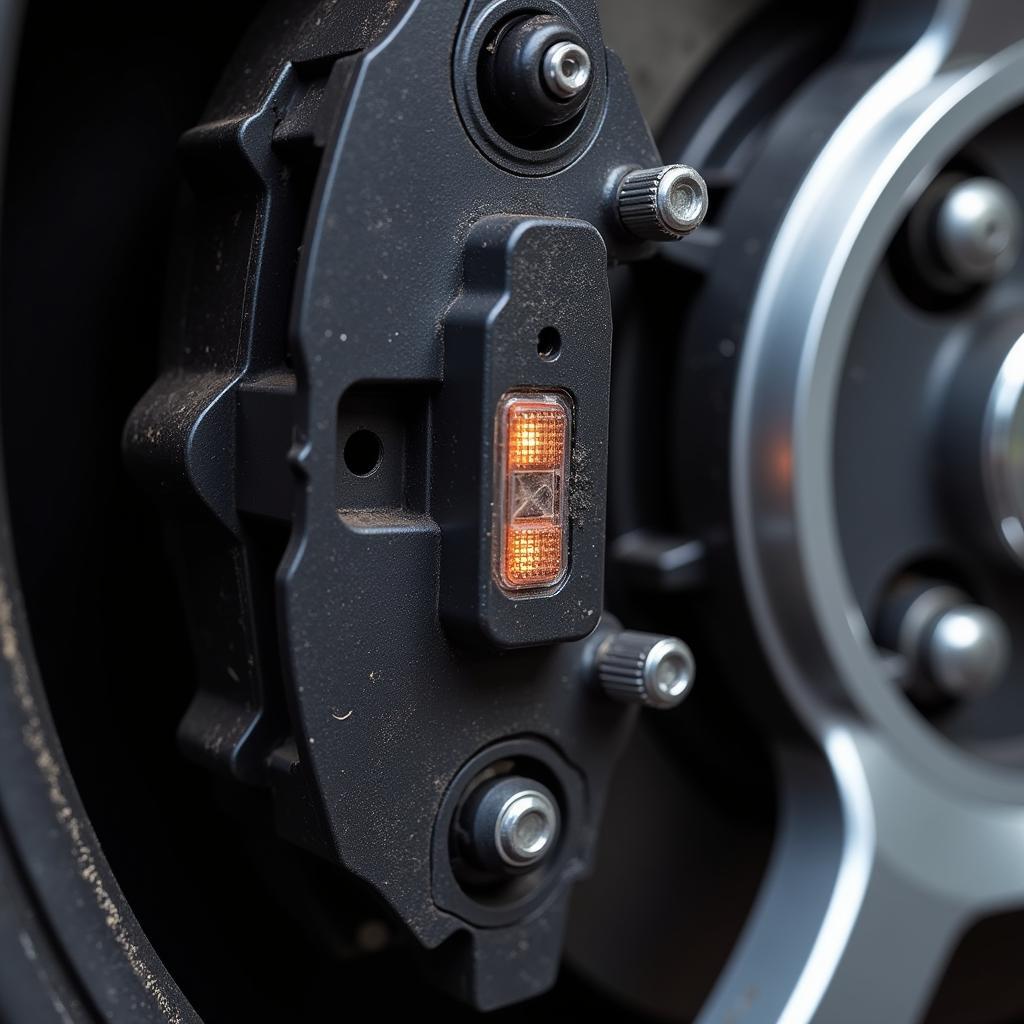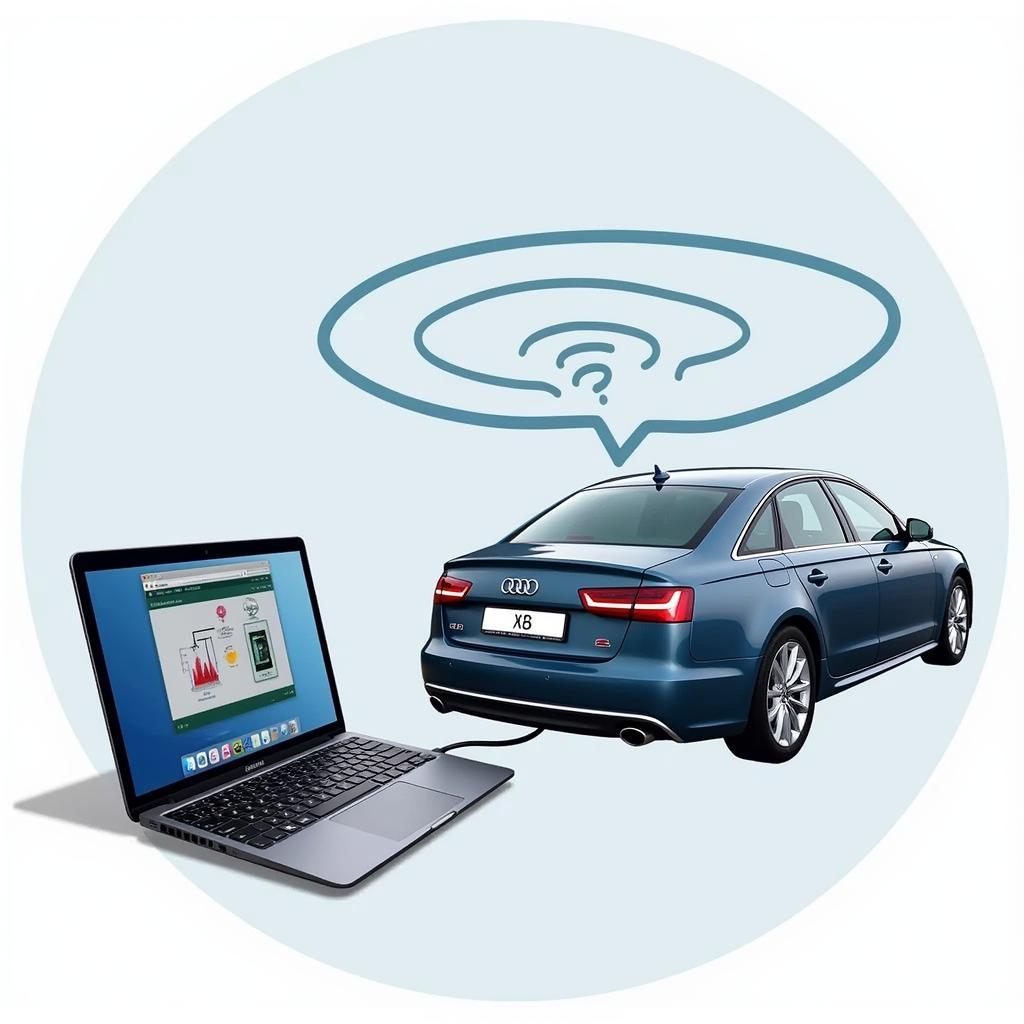The brake pad warning light on your 2004 Audi A6 is a critical safety feature designed to alert you about potential issues with your braking system. Ignoring this warning could lead to reduced braking performance and potentially dangerous driving situations. This article will discuss the common causes of the brake pad warning light illumination, how to diagnose the problem, and the steps involved in resolving it.
Understanding the Brake Pad Warning Light System
The brake pad warning light system in your Audi A6 is relatively straightforward. Embedded within the brake pads themselves are wear sensors. These sensors are strategically placed to come into contact with the brake rotor when the brake pads reach a certain level of wear. When this contact occurs, it completes an electrical circuit, triggering the warning light on your dashboard.
Common Causes of the Brake Pad Warning Light
While the most common cause for the brake pad warning light to illuminate is worn brake pads, there are other potential culprits:
- Worn brake pads: As mentioned earlier, this is the primary reason for the warning light.
- Faulty brake pad wear sensor: The sensors themselves are subject to wear and tear and can malfunction, triggering a false warning.
- Damaged wiring: The wiring connecting the sensors to the dashboard light can become frayed or corroded, disrupting the signal.
- Low brake fluid: While technically a separate system, low brake fluid can sometimes trigger the brake pad warning light. This is because low brake fluid can affect overall braking pressure.
Diagnosing the Problem
 Audi A6 Brake Pad Wear Sensor
Audi A6 Brake Pad Wear Sensor
If your brake pad warning light is on, the first step is to check your brake pads. You can often visually inspect the pads through the spaces between the wheel spokes. If the pad material is less than 1/4 inch thick, it’s time for a replacement.
Expert Insight:
“Many drivers neglect to regularly inspect their brake pads. Remember, preventative maintenance like this can save you time, money, and potential headaches down the road,” says master mechanic, Johnathan Miller.
 Checking Brake Fluid Level
Checking Brake Fluid Level
If the brake pads appear to have sufficient life left, the next step is to check the brake fluid level. Refer to your owner’s manual for the location of the brake fluid reservoir and the recommended fluid type.
If the brake fluid level is low, it needs to be topped up. However, consistently low brake fluid could indicate a leak in the system, which necessitates immediate professional attention.
What If the Brake Pads and Fluid Are Okay?
If you’ve confirmed that your brake pads and brake fluid levels are fine, there might be an issue with the wear sensors or the wiring. At this point, it’s recommended to consult with a qualified mechanic, especially one specializing in Audi vehicles.
Utilizing Remote Diagnostic Services for Your Audi A6
In today’s technologically advanced world, remote diagnostic services are becoming increasingly common in the automotive industry. These services allow mechanics to remotely access your vehicle’s computer system to retrieve diagnostic trouble codes (DTCs), often providing valuable insight into the root cause of the warning light.
Expert Insight:
“Remote diagnostics can be incredibly helpful in quickly identifying the cause of a warning light, especially for issues like faulty sensors or wiring problems. It’s a valuable tool that can save time and money in the diagnostic process,” explains Sarah Jenkins, lead automotive electrical systems engineer.
 Audi A6 Remote Diagnostics
Audi A6 Remote Diagnostics
Keep in mind that while remote diagnostics can be highly effective, they may not always pinpoint the exact problem. In some cases, physical inspection by a qualified technician is still necessary.
Don’t Ignore the Warning
The brake pad warning light in your 2004 Audi A6 is crucial for your safety. Ignoring it could lead to more extensive and costly repairs down the line and potentially compromise your safety on the road. By understanding the common causes, taking proactive steps for diagnosis, and utilizing available resources like remote diagnostics, you can keep your Audi A6 braking safely and efficiently for miles to come.

